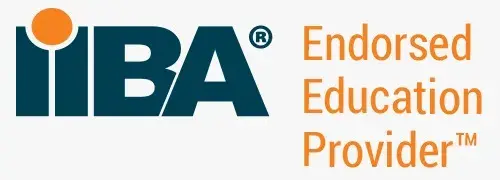This article introduces the Business Analysis Body of Knowledge (BABOK) Guide. BABOK guide is the official guide for all IIBA examinations for Business Analysts Certification. It’s a comprehensive guide for understanding the Business Analysis practice.
The BABOK Guide can drive business results and career advancement for employing successful Agile Business Analysis. It describes both the mentality and the actions that will assist you in using continuous feedback and quick learning to prioritize delivery, minimize waste, achieve better business outcomes, and maximize the value delivered.
Implementing a Business Analysis Body of Knowledge (BABOK) Practice at work aims to improve an organization’s workflow by demonstrating its influence on the workplace. While putting a technique into practice, especially for beginners, to achieve better business outcomes that bring actual value to both the business and the customer.
Key concepts in the BABOK Guide
The BABOK Guide covers several essential themes, including strategies for:
- Identifying a business requirement.
- Identifying the resources that will be necessary to achieve the business requirement.
- Users, consumers, and other stakeholders' relevant input are being gathered and confirmed by the team.
- Defining and modelling requirements, as well as designing solution architectures.
- Data is being used to model potential solutions.
- Identifying and evaluating the value that each offered solution model offers.
- Making enhancements to a proposed solution model would raise the model’s value.
- Managing and arranging the business data required to document the success or failure of a given solution is a challenging task.
- From the beginning to the end, maintaining control and retaining requirements and design knowledge.
Certifications with the BABOK Guide reference
The BABOK Guide is used as the reference book for three certification levels in Business Analytics:
BABOK Guide Architecture
What is the architecture of the BABOK® Guide? The guide comprises five essential elements. These elements are:
Business Analysis Body of Knowledge – Essential Elements
Let’s look at each of these elements.
Core Concepts
Core Concepts are fundamental to the practice of business analysis as defined in the Business Analysis body of knowledge (BABOK) Guide. The Business Analysis practice, as described in the BABOK Guide, is based on these Core Concepts and is part of the Business Analysis Core Concepts Model (BACCM).
Knowledge Areas & Tasks
The Business Analysis practice has been divided into different Knowledge Areas. These Knowledge Areas cover the entire Business Analysis work areas. Each of these Knowledge Areas is further divided into doable tasks. BABOK Guide describes the functions of each Knowledge Area in a structured and systematic manner. For example:
- Prepare for Elicitation
- Conduct Elicitation
- Confirm Elicitation results
- Communicate Business Analysis information
- Manage Stakeholder Collaboration
Underlying Competencies
As per BABOK Guide, the Underlying Competencies chapter describes the behaviors, characteristics, knowledge, and personal qualities that support the practice of Business Analysis. The competencies defined in the guide are generic competencies and applicable to other professional areas.
The competencies have been divided into 6 categories: analytical thinking and problem solving, communication skills, interaction skills, etc. As you can make out, these competencies may apply to other professional areas.
Techniques
The BABOK guide enlists techniques for each of the tasks under knowledge areas. A Business Analyst can use these techniques to accomplish tasks. The guide has picked up the most used and common techniques. Business Analysts apply their experience and judgment in determining which techniques are appropriate to a given situation.
Perspectives
Perspectives are one of the core concepts, which focuses on the Business Analysis activity for each project. For example, AGILE is one of the perspectives indicating that the Business Analysis activities have to be applied and used with AGILE perspective rather than a traditional project perspective.
BABOK Guide For ECBA
The BABOK Guide is built around a knowledge area collection of knowledge areas for ECBA that guides Business Analysts through their work at any stage of the project or product life cycle. Knowledge areas outlined in a BABOK Guide signify what Business Analysts must know and what duties they must complete.
The BABOK Guide defines six knowledge categories and you’ll need to learn the high-level definitions of each knowledge area, as well as the more detailed activities, elements, inputs, and outputs if you plan to take the ECBA exam. If you want to utilize these knowledge areas in the workplace, you’ll need to master the tasks and abilities necessary to become a successful business analyst.
The six areas of knowledge listed below are:
Conclusion
It is critical to become familiar with BABOK terminology if you are new to business analysis to pass the ECBA exam, as many questions will be definition-based. Becoming familiar with BABOK glossary terminology can also help you become more proficient in business jargon, which will help you appear more credible during business interviews.
The ECBA (Entry Certificate in Business Analysis) and CBAP (Certified Business Analysis Professional) certifications are highly valued in the business analysis industry. They demonstrate a level of expertise and knowledge in the field and can help to advance your career.
Techcanvass offers industry-leading ECBA and CBAP certification training courses that are designed to help professionals advance their careers in the business analysis field. You can also explore our BABOK Match-Making Drills or BABOK game, which will allow you to understand BABOK on a deeper level.
Join our course and become ECBA or CBAP certified today!



